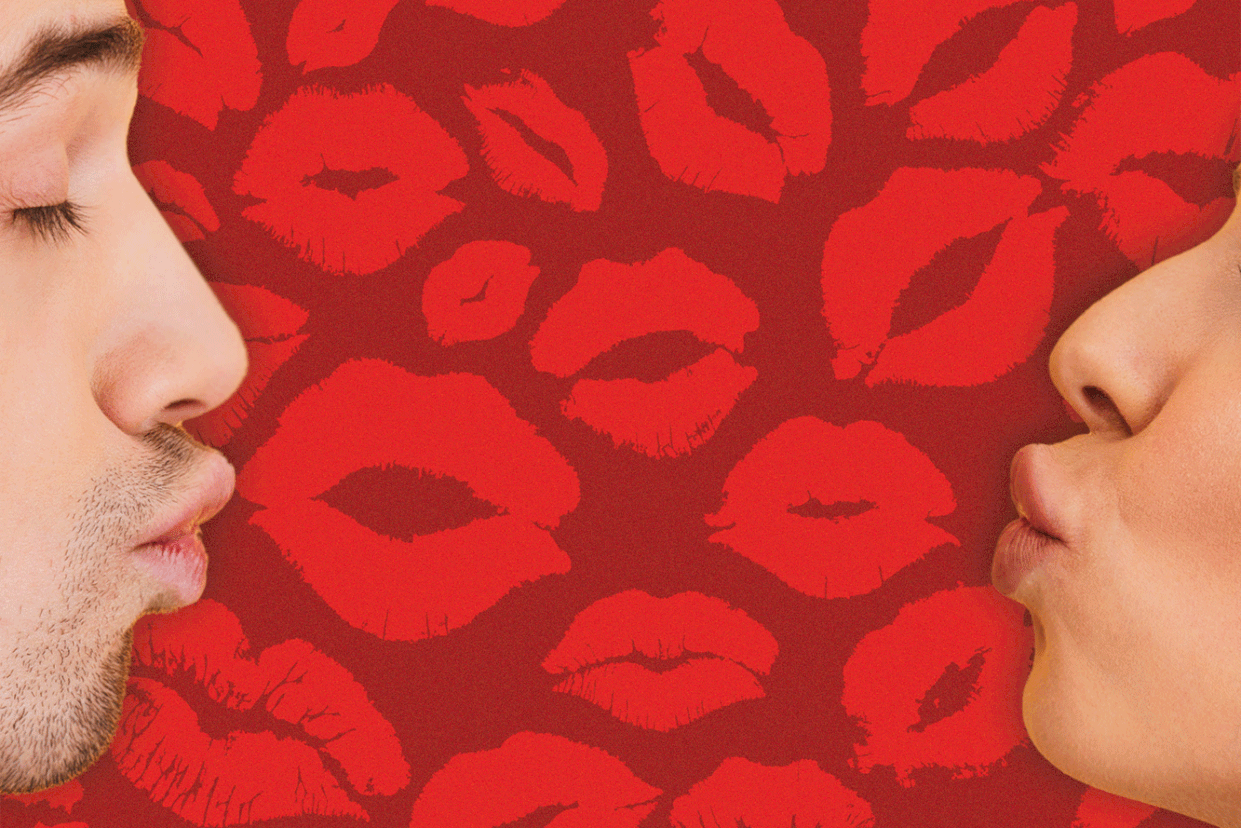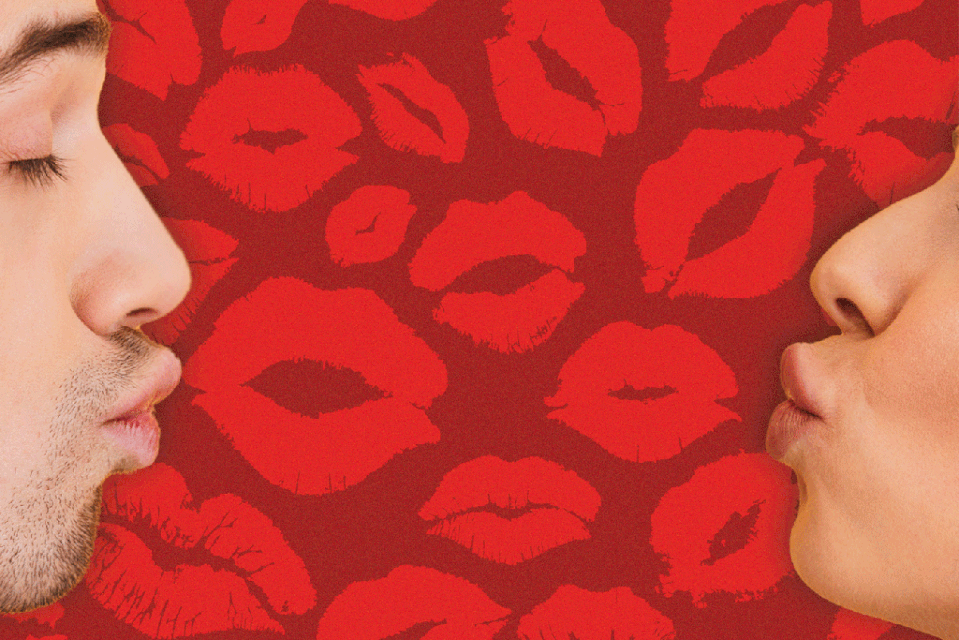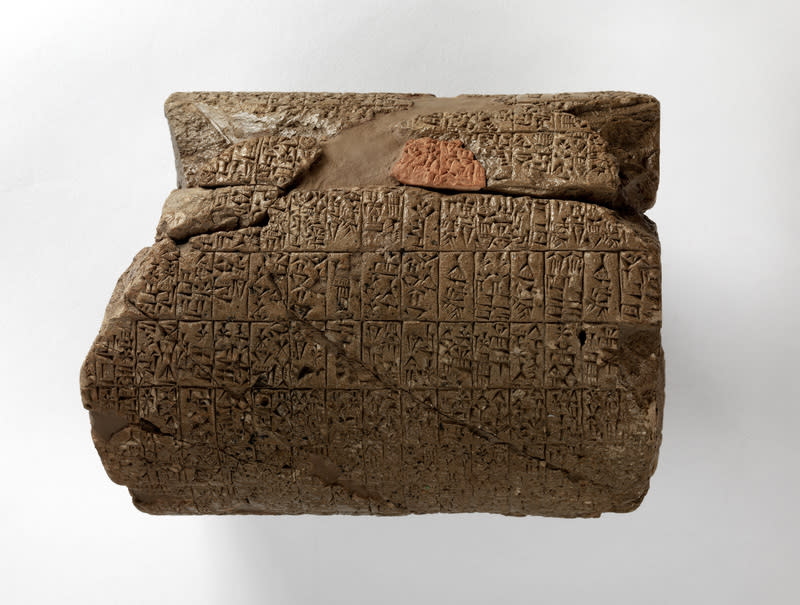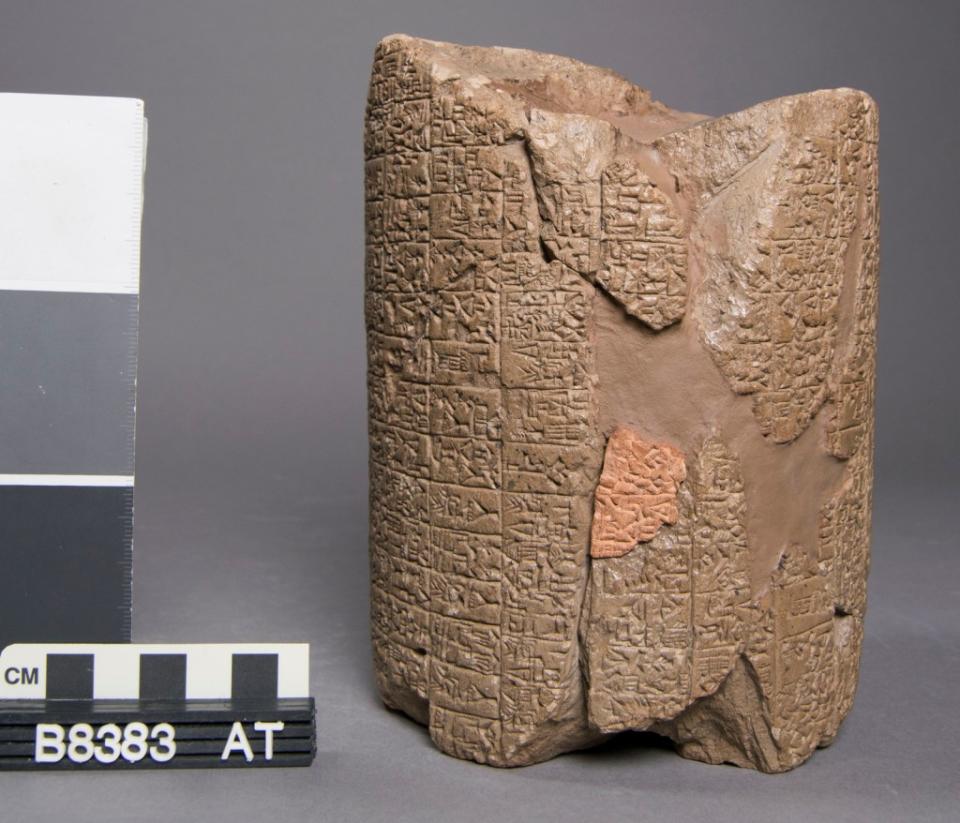Origin of kissing finally solved after years of mystery — and it includes a spicy secret

Kiss and tell.
Danish historians say evidence of the first mouth-to-mouth smooch can be found on a clay tablet unearthed in the Middle East, the New York Times reported, upending academic theory about which culture kissed first — and introducing a spicy secret.
Until recently, scholars believed that those in South Asia were the first to engage in lusty lip-locking, with the practice spreading around the globe circa 300 B.C. — not long before the Indian sex manual, the Kama Sutra, was first published.
But in a recent article for Science, Dr. Troels Pank Arbøll and Dr. Sophie Lund Rasmussen assert that humans were twisting their tongues together much earlier than that.
“Lip kissing was documented in ancient Mesopotamia [modern day Iraq] and Egypt from at least 2500 B.C onward,” the historians — who are a husband and wife team, having bonded over shared love for archaeology — declared.

They say evidence of a lusty lip-lock is etched into the Barton Cylinder, a clay tablet excavated in the ancient city of Nippur.
The artifact features a visual narrative that exposes a spicy secret about how humans used to kiss — and it will come as a surprise.
In contemporary culture, tongue kissing is conceived as a precursor to sex, but the etchings on the clay tablet indicate that lip-locking used to be done only after lovemaking was finished.
“The subjects have sexual intercourse first and only afterward do they kiss,” academic Gonzalo Rubio told the New York Times in the new report about the frisky findings. “It is afterplay of some sort, rather than foreplay.”

Previously, academics had asserted that the first-ever recording of a romantic mouth kiss came from Vedic Sanskrit manuscripts composed in 1500 B.C. in what is now modern-day India.
Professors proposed that the herpes virus originated in that area and spread across the globe after the practice of smooching was adopted by Alexander the Great’s troops when they returned to the Mediterranean from Northern India around 300 B.C.
But Arbøll and Rasmussen refute that “reductionist” idea.
They say the clay tablet exposes that tongue kissing did “not emerge abruptly or in a specific society” and “appears to have been practiced in multiple ancient cultures over several millennia.”


Indeed, they believe the urge to kiss a lover on the mouth is intrinsic — even if it was subject to certain contextual constraints, like being saved as something for after sex.
“Lip-kissing has been observed in chimpanzees and bonobos, our closest living relatives,” Dr. Rasmussen told The New York Times. “The kissing practices of these primates hints at something fundamental that goes way back in human history.”
“It’s all about finding the strongest, healthiest mate to produce the strongest, healthiest offspring,” she said. “So you unconsciously evaluate a person’s suitability through chemical cues like bad breath, which might indicate bad teeth, which might indicate bad genes.”

